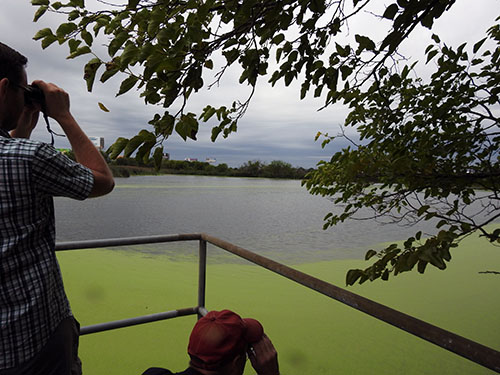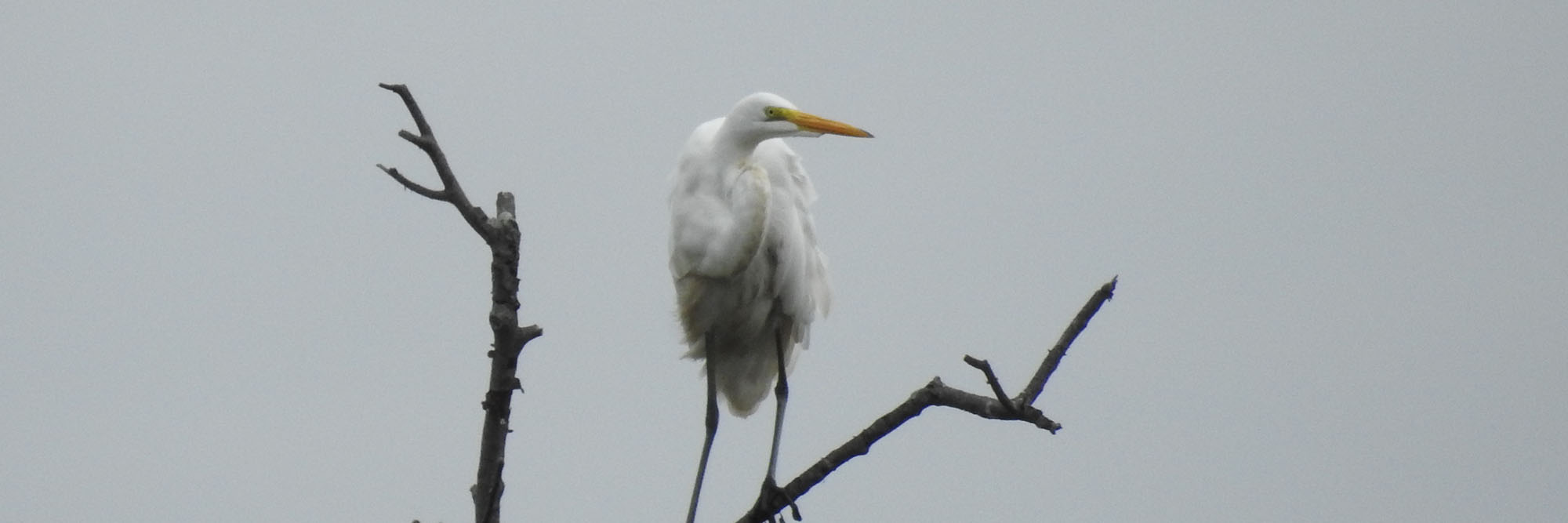Today’s Flashback Friday post takes a quick trip back to the summer, but also links to a much older tradition: we’re in the last week of the 120th #ChristmasBirdCount, a national effort to survey winter bird populations led by the Audubon Society that gets lots of local participation.
Our #FBF video and photo gallery comes from a tour we did this summer at our Southwest Water Pollution Control Plant, located halfway between the John Heinz National Wildlife Refuge and the Lakes at FDR Park:
Search the Sludge for Moorhens
Led by long-time PWD engineer and educator Drew Brown, the expedition centered on the plant’s now-retired sludge lagoons and came at the request of a small group of birders from another group with historic local ties, the Delaware Valley Ornithological Club. They have held regular meetings at Philly's Academy of the Natural Sciences for 125 years – making them older than even the Christmas Bird Count!
As club member Holger Pflicke explains above, the group got what they were looking for at the Southwest Plant: a sighting of Common Moorhens (Gallinula galeata), or Gallinules.
While not endangered, the birds aren’t seen locally very often and have suffered habitat loss due to the development of wetlands. But, as birders across the globe know, wastewater treatment plants often provide accidental sanctuaries in urban areas. That is the case with our sludge lagoons, which are a series of man-made ponds near the plant.
Up until the early 1980s, they were used to hold processed sewage solids until the material could be shipped out to sea using barges. With the Clean Water Act and other regulations came more stringent treatment requirements that made the lagoons obsolete for sewage disposal… but perfect for birds and other wildlife!

Holger Pflicke and Drew Brown scan a sludge lagoon in search of the Common Moorhen in August 2019.
In recent years, members of the Delaware Valley Ornithological Club had documented Moorhens in nearby FDR Park, but then they seemed to disappear. Pflicke and others had a theory that the birds had moved to our sludge lagoons, which are closed to the public, to mate and raise their young.
That seems to have been the case, as the birders discovered previously unseen juveniles in the marsh.
We have shared the images for the first time here for #FlashbackFriday, and we encourage you to learn more about the Christmas Bird Count, which is accepting photos of birds and other info through the Audubon website until Jan. 5. Thank you to Gregg Gorton of the DVOC for sharing the photos taken with his spotting scope!
